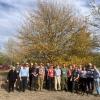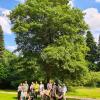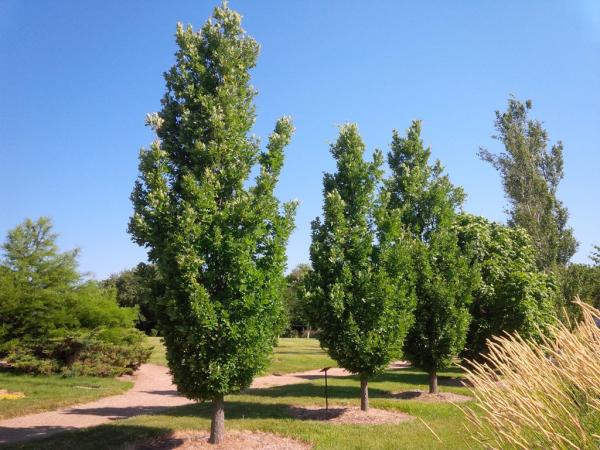Editor's Picks
Oak collections and much more in Canberra, New South Wales...
Website Editor
|
Aug 11, 2025
A controversial publication proposes to change the...
Roderick Cameron
|
Aug 05, 2025
A team of reporters share their take on the event.
Website Editor
|
Jun 22, 2025
Plant Focus
A naturally occurring hybrid between Quercus robur and Q. alba.
In 2008 one red oak hybrid (Quercus rubra × ellipsoidalis) was diagnosed with oak wilt disease (Ceratocystis fagacearum) at Starhill Forest Arboretum in Illinois. The tree was removed to below grade and burned to prevent Nitidulid sap beetle vectors from spreading the fungus. The roots were treated with butoxyethyl ester of triclopyr (Garlon-4 herbicide) to try to prevent conduction of the disease to adjacent trees via root grafting.
One of the adjacent trees was another red oak (Q. ×subfalcata), and that tree has been watched very closely for any sign of infection. The other two closest trees were a white oak (Q. mongolica) and a Cerris oak (Q. variabilis), which presumably would be unlikely to root graft with the red oak and were considered comparatively safe.
In mid May of 2009, it was noticed that the Q. mongolica was displaying typical symptoms as normally seen on systemically infected white oaks (scattered wilt throughout the tree). A few days later, the Q. variabilis wilted rapidly with a similar pattern, and was defoliated within about 10 days. The following week, the Q. ×subfalcata began to wilt, showing the classic red oak symptoms (large branches wilting, beginning near the top of the tree and progressing rapidly downward).
Because each of these new infections occurred adjacent to the first tree, no new infections were found elsewhere in the stand, and there was no pruning activity or other noticeable damage that would have attracted the beetle vectors, it can be presumed that the fungus has been moving via root grafts across taxonomic sectional boundaries. To our knowledge, this has not previously been reported to occur. Confirmation would require full root excavation, which we are not prepared to do, but there is little doubt of the circumstances involved.
We are treating all surrounding oak trees via macro-infusion root-flare injection of propiconazole (Alamo fungicide) and preparing to severe root connections with a trencher. Once that has been completed, the symptomatic trees will be removed and burned to prevent beetle access. Meanwhile, we are seeking any observations from IOS members regarding previous observations of natural root grafting leading to disease transmission across sectional lines.
Guy Sternberg















